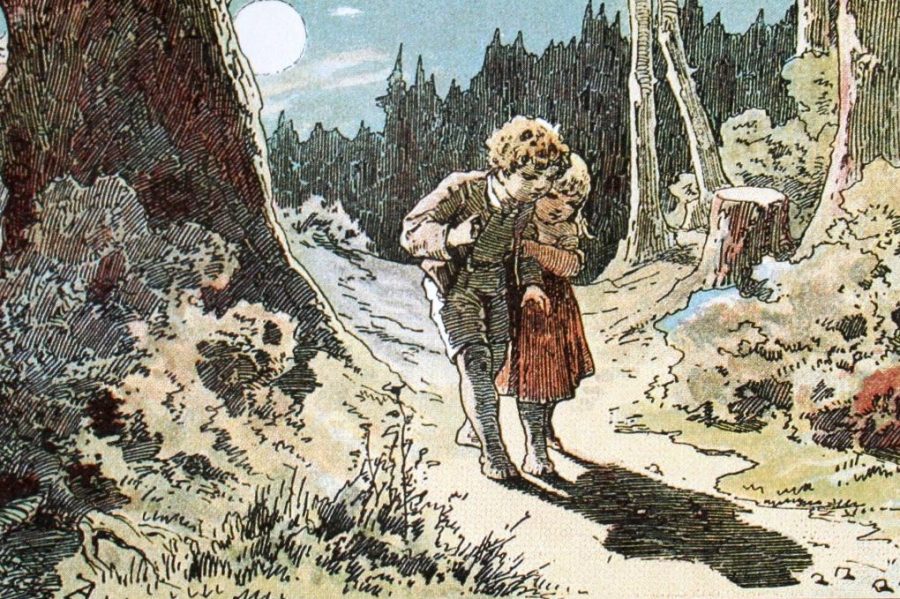‘Gretel and Hansel’ amazes
IMAGE / Wikimedia Commons
‘Gretel & Hansel’ stunned theaters with its cinematography and style. The film released Friday, Jan. 31.
The thrilling fantasy “Gretel & Hansel” released Friday, Jan. 31, thrilling audiences with its take on the classic fairy tale.
The film replicates the age old tale of “Hansel and Gretel.” which follows two siblings abandoned by their mother. The siblings seek refuge with a child-hungry witch and outsmart the witch in order to survive.
But, the movie twists the tale.
The beginning sets the tone of the film, showing us that Gretel and Hansel’s mother has gone crazy and urges them to leave the home. Gretel and Hansel leave the home in fear to find work and food in the dark forest.
While searching the forest in the night, they stumble upon a dank building where they are saved by a man after being attack by a unknown figure.
The man takes them to his home to feed them and give them advice on where to find work. The siblings are on their way in the morning.
As night falls again, they spot a house. Hansel breaks in and Gretel is greeted by the woman of the house after getting a scare as Hansel is snatched away.
The woman, who we know is the witch of the story, treats the siblings kindly during their stay. Gretel offers to do work in payment for their stay and the woman agrees.
Later in the story, the woman reveals to Gretel that she has godly powers and that Gretel has them too, wanting to build her powers.
Gretel begins to have unnerving dreams but continues to stay at the house.
A pivotal point in the story arrives when, during the night, Hansel’s complaints and worries cause Gretel to pull him out of the house and send him into the forest alone. She regrets this decision but the woman believes it will help her in the long run.
Gretel continues to have the dreams and begins to question the woman’s intentions, wondering where the food she has comes from. In one dream, she figures it out, as she sees Hansel in a trance and a table of guts magically turn into a lavish plate of food.
Gretel refuses to eat the food, causing the woman to show her true colors, pulling out a long, blonde piece of hair from the food she had just ate.
Gretel becomes unconscious and wakes up in a room cuffed to a table, where Hansel is standing aimlessly with the witch, in her younger form, waiting to sacrifice Hansel.
Gretel cannot take this and while the witch convinced Hansel to climb a ladder over a pit of flames, Gretel uses her newfound powers to decapitate and burn the witch with a wooden staff. This stops Hansel from climbing the ladder and Gretel is able to break free from her cuffs.
In the end, Gretel sends off Hansel to find work as Gretel stays behind to dive deep into her powers and release the children the witch had killed, her fingers turning black as the witch’s had.
This film was beautifully directed by Oz Perkins, who also directed “The Blackcoat’s Daughter” and “I Am The Pretty Thing That Lives In This House.” It came with masterfully-crafted sets that set the tone for every scene.
Though the visuals and camerawork were magnificent, the story was not what was expected.
Gretel and Hansel left audiences pondering why certain things happened at the end, such as Gretel’s fingers turning black as the witch’s had.
The ending is never explain, but I think that is what writer Rob Hayes and Perkins both envisioned.
The film keeps you coming back for more due to the complexity and visuals of the film.
The major disadvantage of the film is the story’s writing. It was confusing at times and didn’t set up the movie to its fullest potential.
The film has a 5.5 out of 10 on IMDb and Rotten Tomatoes gave it a 61 percent. Both are reasonable scores due to its weak story.
Overall, the strongest point of this film was its visuals and camera work but it was held down by its poor writing.

Class: Junior
Hobbies: Volleyball, tennis, sailing, and cooking.
Future Plans: I would love to go to college to study culinary, law, or mathematics....






